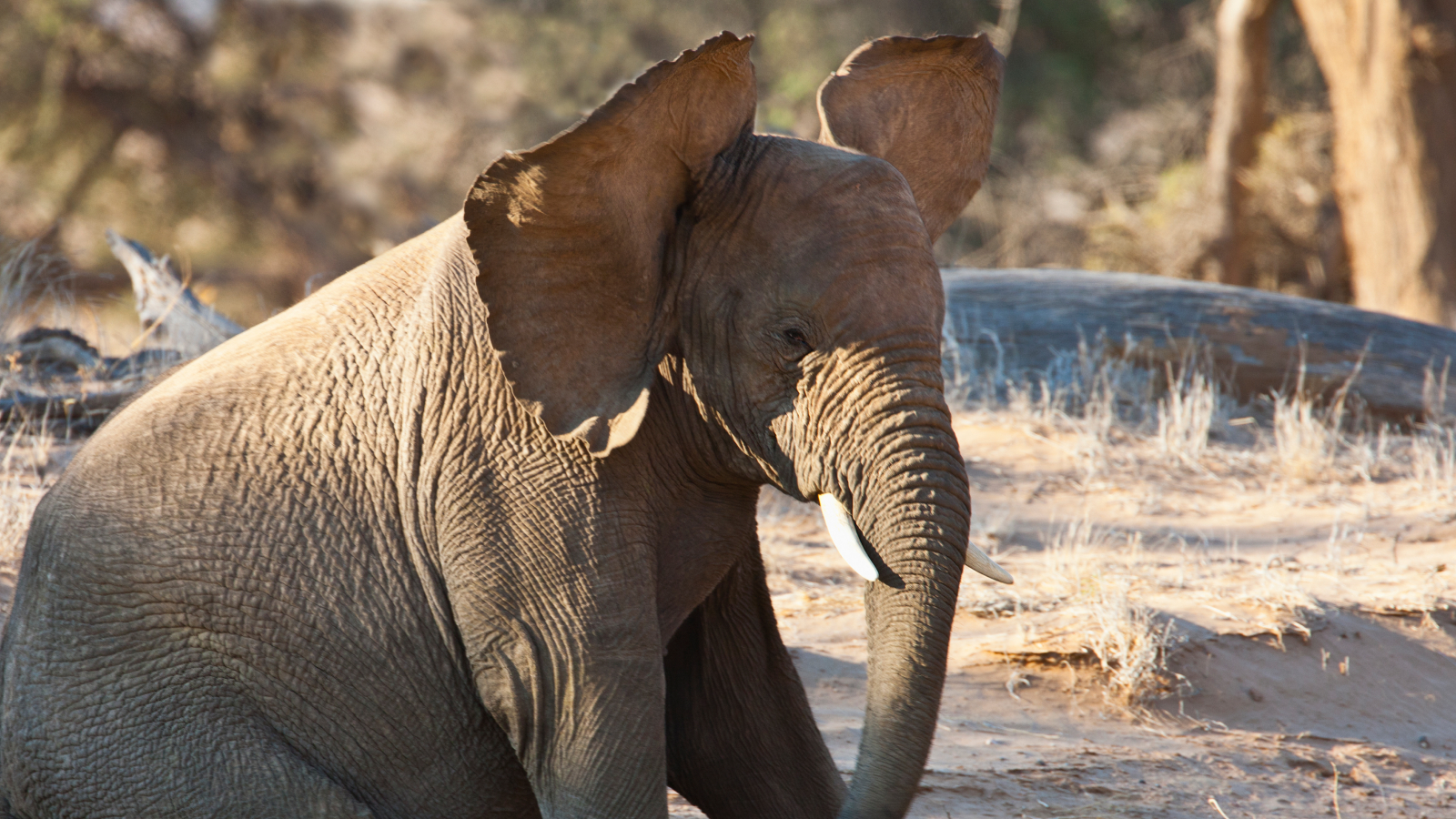Elephants are known for their intelligence, complex social behavior, memory and size, including their giant ears. The ears of African elephants (Loxodonta africana) can grow up to 6.6 feet (2 meters) long and 4 feet (1.2 m) wide, while Asian elephants (Elephas maximus) have slightly smaller and rounder ears.
That’s about 17% of their body length, which means that while they’re the animal with the largest ears, they’re not actually the one with the largest ears relative to the size of their body. That award goes to the long-eared jerboa (Euchoreutes naso), but it’s still impressive to have 6-foot-tall ears.
So why are elephants‘ ears so big? There’s a practical reason for their large size, experts told Live Science: It keeps elephants cool.
An animal that big generates a lot of heat, especially in the hot savannas, forests and grasslands where they live. But unlike humans, elephants don’t really sweat, William Sanders, a vertebrate paleontologist at the University of Michigan who specializes in fossil elephants, told Live Science. Instead, they have very little body hair and “spectacular cooling devices” — massive ears filled with large blood vessels that help the giant animals thermoregulate.
“When the animal gets really warm, it can force blood into its ears, and then it’ll flap them,” said Advait Jukar, an assistant curator of vertebrate paleontology at the Florida Museum of Natural History. Elephant ears have thin skin that is only millimeters thick and the blood vessels that pass through them are large, enabling elephants to move about 20% of their blood supply through their ears at any one time.
Related: Do ‘elephant graveyards’ really exist?
The larger the ears are, the more surface area they have to release heat into the surrounding air. Because the blood flowing through them is warmer than the air, the heat dissipates into the elephant’s surroundings. Cooler blood then circulates back into the body, helping to reduce the animal’s overall temperature, Jukar told Live Science. The animals can expand or constrict their blood vessels depending on whether it’s cool or hot, which helps regulate their temperature
According to Jukar and Sanders, the fossil record supports this idea. Mammoths, which are relatives of modern elephants, first evolved in Africa. As they began moving into colder climates, their ears gradually became smaller, Jukar said.
“We know from mummified woolly mammoths in Siberia, for example, that they have very small ears compared to savanna African elephants,” Sanders explained. “It was more important that they had fur, right? They were woolly for a reason, and it’s to maintain their body heat. So it’s the other way around.”
While elephants likely have their big ears to keep themselves cool, their ears also have other uses. Some studies suggest that elephants use their ears to funnel sound waves, which can help them hear lower-frequency sounds. Elephants can also detect low-frequency vibrations through their feet, which have receptors called Pacinian corpuscles that can conduct the vibrations through their bodies. So, with their feet and massive ear bones combined, elephants can communicate over dozens of miles.
Their large ears help the highly social animals communicate with each other, Sanders said.
“They can’t signal by waving their paws around, so they have to signal in other ways,” he said. Elephants that are going to charge will bring their ears forward and start moving them rapidly to appear larger, for example.
“That’s a sign that they’re really pissed off. And that’s the time when you should be putting your car in reverse or should be vacating the area very quickly,” he added.
Elephant quiz: Test your smarts on the world’s largest land animal














